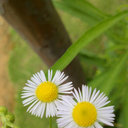Estrogenic activities of extracts of Chinese licorice (Glycyrrhiza uralensis) root in MCF-7 breast cancer cells.
Keywords
Abstract
Despite the wide use of Chinese licorice root (Glycyrrhiza uralensis) for the treatment of menopausal complaints, little is known on its potential estrogenic properties, and available information relative to its effects on cell proliferation is contradictory. In this study, the estrogenic properties of licorice root were evaluated in vitro by use of several assays. The effects of increasing concentrations of a DMSO extract of licorice root on the growth of MCF-7 breast cancer cells were biphasic. The extract showed an ER-dependent growth-promoting effect at low concentrations and an ER-independent anti-proliferative activity at high concentrations. In further experiments, licorice root was sequentially extracted to yield four fractions: hexane, EtOAc, methanol and H(2)O. Only the EtOAc extract had effects on cell proliferation similar to the DMSO extract. The hexane extract had no effect on cell growth. In contrast, the methanol and water extracts showed an ER-independent, growth-promoting effect. Similar to its effects on cell proliferation, the EtOAc extract had a biphasic effect on S phase cell cycle distribution and the level of PCNA protein. This extract-induced transactivation of endogenous ERalpha in MCF-7 cells, supported by inducing down-regulation of ERalpha protein and mRNA levels, and up-regulation of ERalpha target genes pS2 and GREB1. These results suggest that the activity of licorice root and the balance between increased risk for cancer and prevention of estrogen-dependent breast cancer may depend on the amount of dietary intake.


